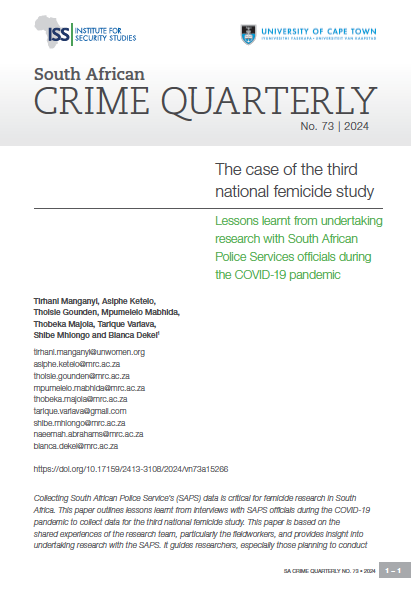No. 73 (2024): No. 73: SACQ 2024
South African Crime Quarterly 2024 contains an article by Manganyi et al. that outlines the lessons learnt during data collection with the South African Police Service for the third national femicide study during the Covid-19 pandemic. The paper discusses the intricacies of collecting data with SAPS and suggests ways to improve data collection and minimise the service disruption on SAPS of research impact with the police.
Hraklis Papageorgiou, Joseph Baggott and Martin Bekker examine data gathered during the #FeesMustFall movement, using a machine learning model trained on historical South African Twitter data combined with event records from a protest database. They find that these events establish a distinctive time-series pattern, suggesting a robust approach to modelling, identifying or predicting protests within South Africa. They argue that automated protest event analysis may soon provide valuable information about the actors, level of turmoil, size, duration, grievances, and motivations of protest.





.png)